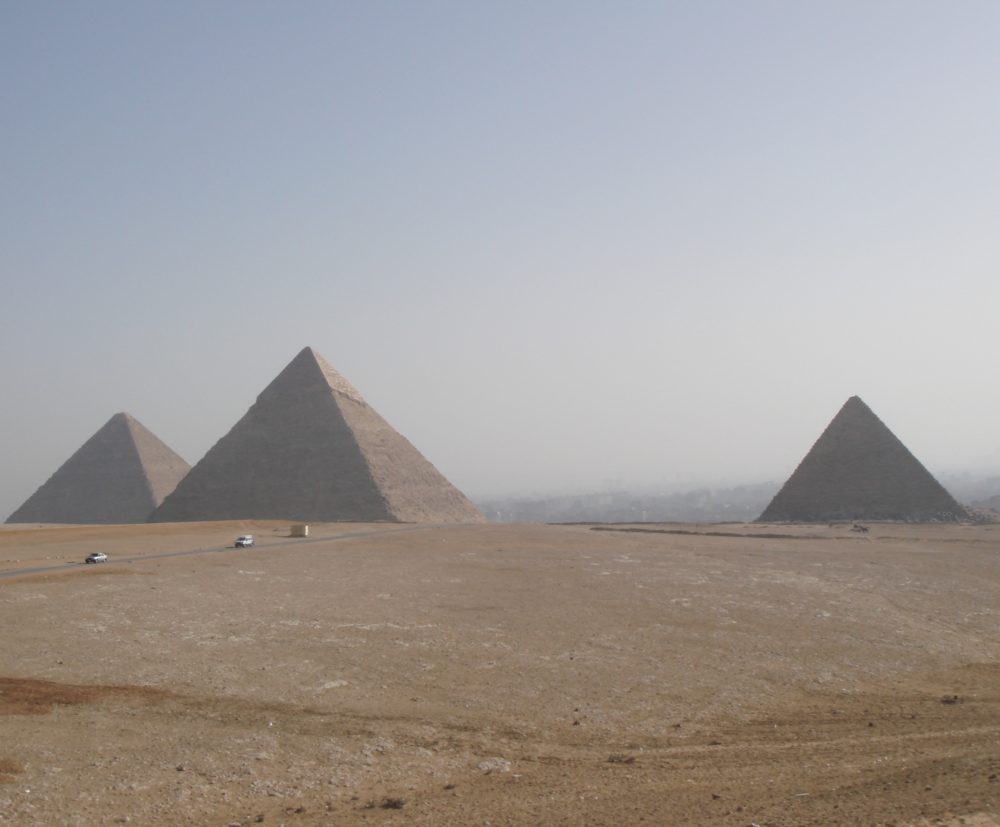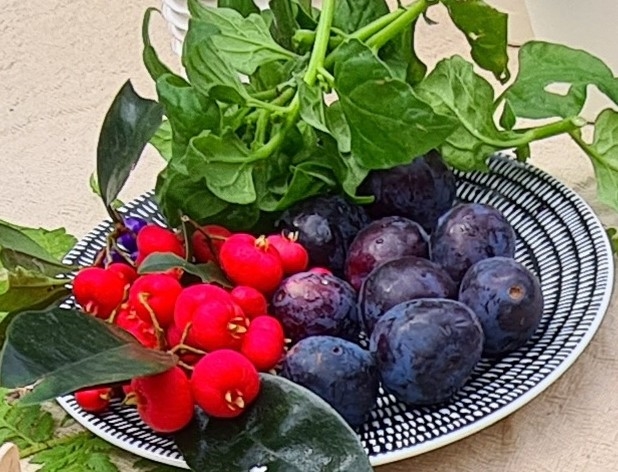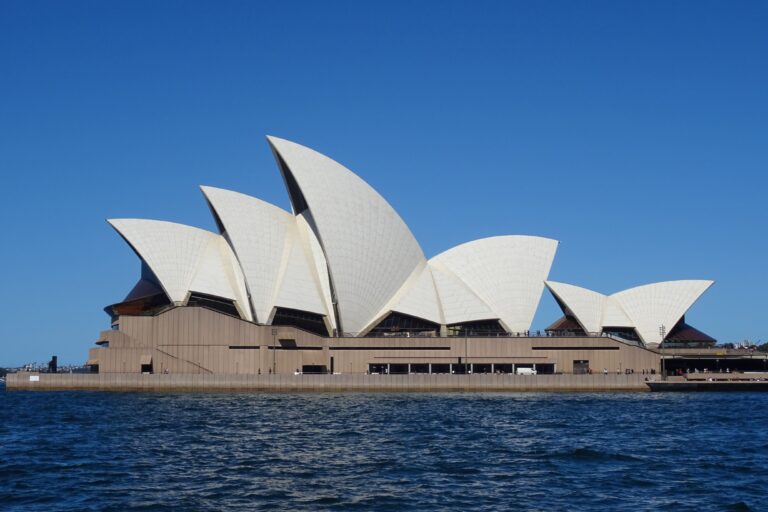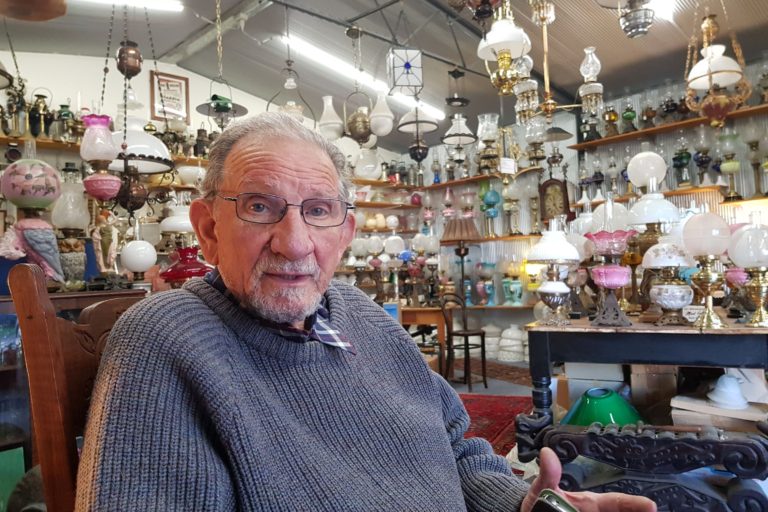By Neena Bhandari
Cairo, Aswan & Luxor, 04.04.2011 (The Hindustan Times): It was meant to be a leisurely exploration of the celebrated monuments of the Nile Valley, but we found ourselves enmeshed in Egypt’s tumultuous events that created political history, marking the end of Hosni Mubarak’s 30-year dictatorial reign.
“It will be a while before travellers return to Cairo”, our guide, Hesham Aref, had told me on Skype in March. International tourist arrivals saw a decline of 45 per cent in the first quarter of 2011, but tourists are gradually returning to Egypt. This augurs well for the country’s ensuing political and social stability. Tourism is one of the four main revenue earners besides the Suez Canal and oil and gas exports. As the leading foreign exchange earner and representing one in every seven jobs, tourism is a crucial factor in Egypt’s economic recovery. In 2010, tourism accounted for 11.5 per cent of the GDP. As many as 14 million international tourists visited Egypt last year, generating nearly US$13 billion in international tourism receipts.
On January 26th, even at 3am, the streets were buzzing with Hyundais and Fords and some old oil guzzlers. Illuminated monuments and buildings went whizzing past as we made our way to Giza, about 20 km southwest of Cairo. What a difference a day would make? Simmering tensions would give vent to open anger. Soon these streets would be filled with pro-democracy activists and labourers calling for nation-wide protests and strikes.

At the pyramids, it was calm as tourists marvelled at the ingenuity of the pharaohs’ creations all those centuries ago. While there are over 70 pyramids along the Nile, the famous three pyramids were built during the eras of Kings Cheops, Kefren and Mykerinos. The Great pyramid built by Cheops stands tall at 145 meters.
Overlooking the Great Sphinx, there were Americans and Germans, Indians and Australians, finding warmth in the camel wool blankets available on hire, as the Sahara desert air cooled and the Sound and Light show began. The limestone monuments came alive with laser graphs putting the mammoth magnitude into context.
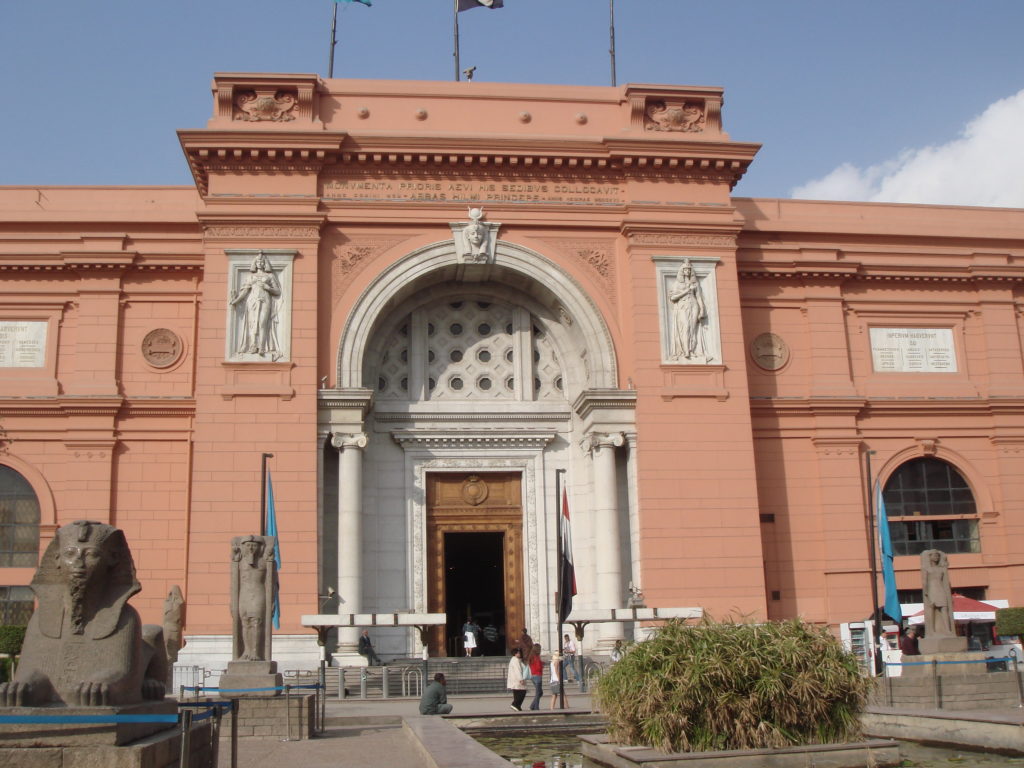
Our guide hinted at “some trouble” the next day as we went through tight security checks at the Egyptian Museum, crammed with over 120,000 antiquities. Walking through the Mummies room and the treasures of Tutankhamen, little did we know that this home to 5,000 years of Egyptian civilisation would soon be vandalised with some treasures destroyed.
At the Khan el-Khalili, a major souk or market in Cairo built in 1382, shops, cafes and street food vendors were doing brisk business. Tourists and locals were enjoying `Shisha’ and Arabic coffee. Reclining on a traditional sofa at Café El Malky that night, near the huge umbrellas that provide shade to the thousands praying on Fridays at the imposing Al-Hussein mosque, I remembered reading about the terrorist attacks there in 2005 and 2009. However, tonight (January 27) there were no signs of an impending revolt against the regime.
Next morning, as we drove across Cairo to take the flight to Aswan, where our three-day Nile cruise would begin, the roads were almost deserted, a far cry from the din of honking horns a night before. In Aswan, gateway to Nubia (the land of gold), we were told that due to the “situation” all tourist venues had been closed.
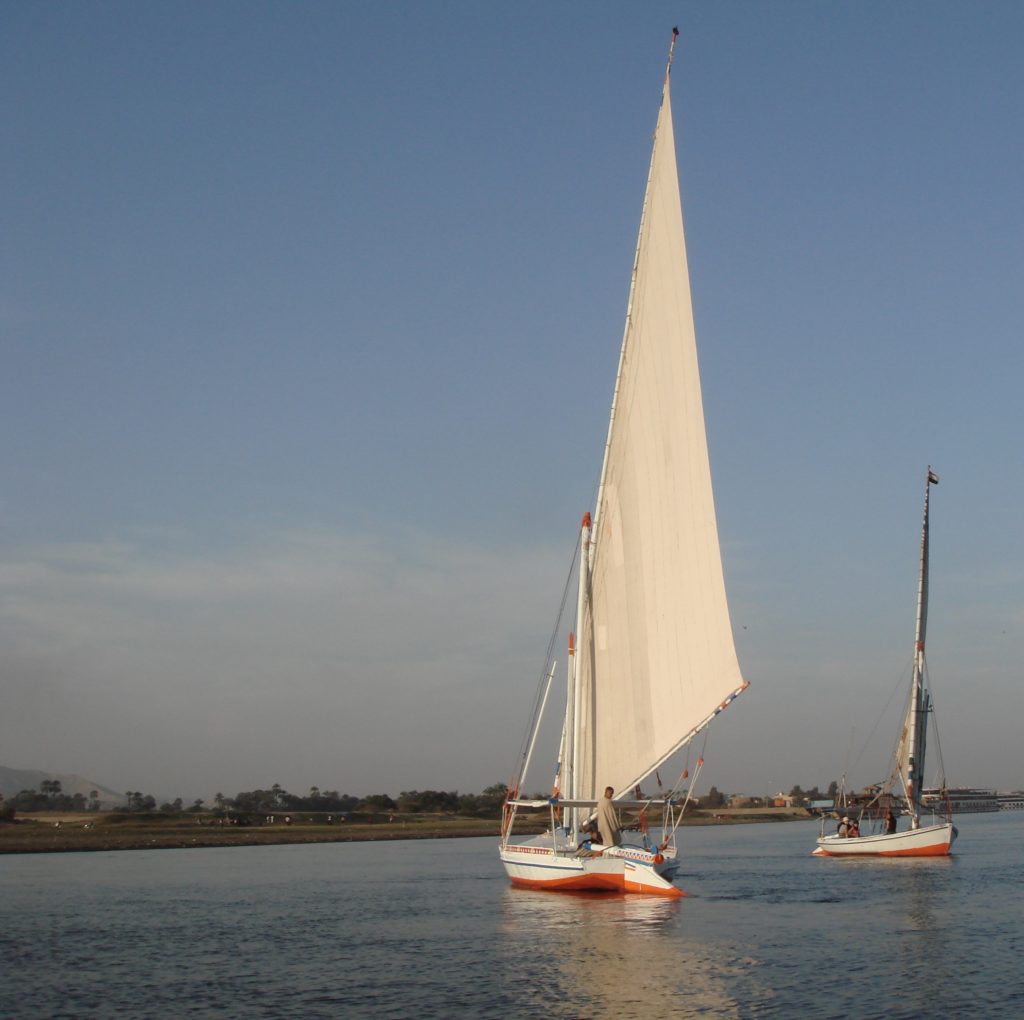
With no clear explanation and all inter-city telephone lines and internet blocked, we were at a total loss. Sensing no trouble, we took a Felucca, the traditional sailboat, for a ride on the Nile. Nearly 78 million out of the 84.5 million (UN, 2010) Egyptians live in the Nile delta.
Perched between Africa, Asia and Europe, Egypt is also an important stopover for migratory birds. There were Hoopoes, Herons, Kingfishers, Egrets and water birds aplenty as we snaked our way through cruise boats, small fishing boats and the noise and air polluting motor boats.
The quietude was far away from the violence unfolding at Tahrir Square in Cairo, where lives were being lost in the fight for freedom.The only channel being telecast on the cruise boat was in Arabic with brief tasters of BBC English and Al Jazeera English.
It was at the dinner table that a young family from Cairo, who looked visibly shaken, told us about the turmoil in the capital and Alexandria. And a group of young Egyptian girls, who were economic and social researchers, told me that most citizens feel they have been ripped off for decades while the ruling elite amassed billions of dollars of wealth.
That night on the top deck of the cruise boat, we lay still with the uncertainty. Aswan had seemed relatively calm apart from a military tank and armoured personnel patrolling the streets. Few shops selling bread and spices were open and there were hundreds of tourists at the High Dam overlooking the Nasser Lake and the unfinished obelisk.
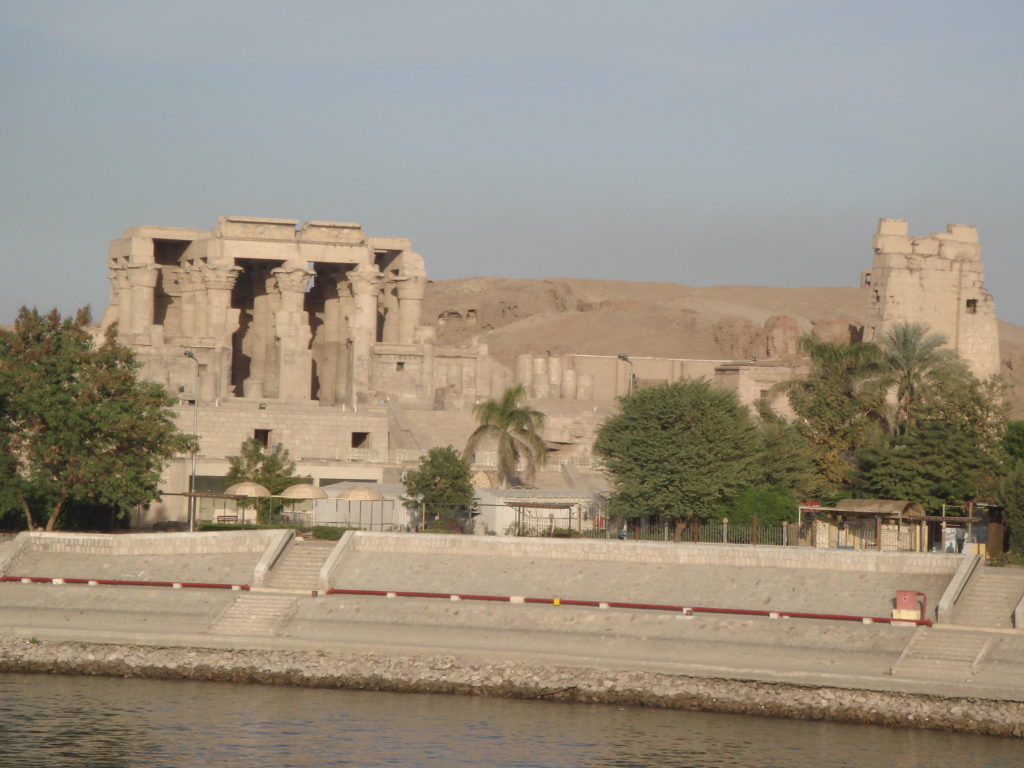
As we sailed towards Luxor, gateway to ancient Thebes, we saw men in Galabeyas or the Egyptian ethnic kaftans, farmers riding on donkeys, women drying clothes, children playing on sandbanks, mud huts behind shaded date palms, banana and sugarcane fields, and trains with red and blue carriages racing past.
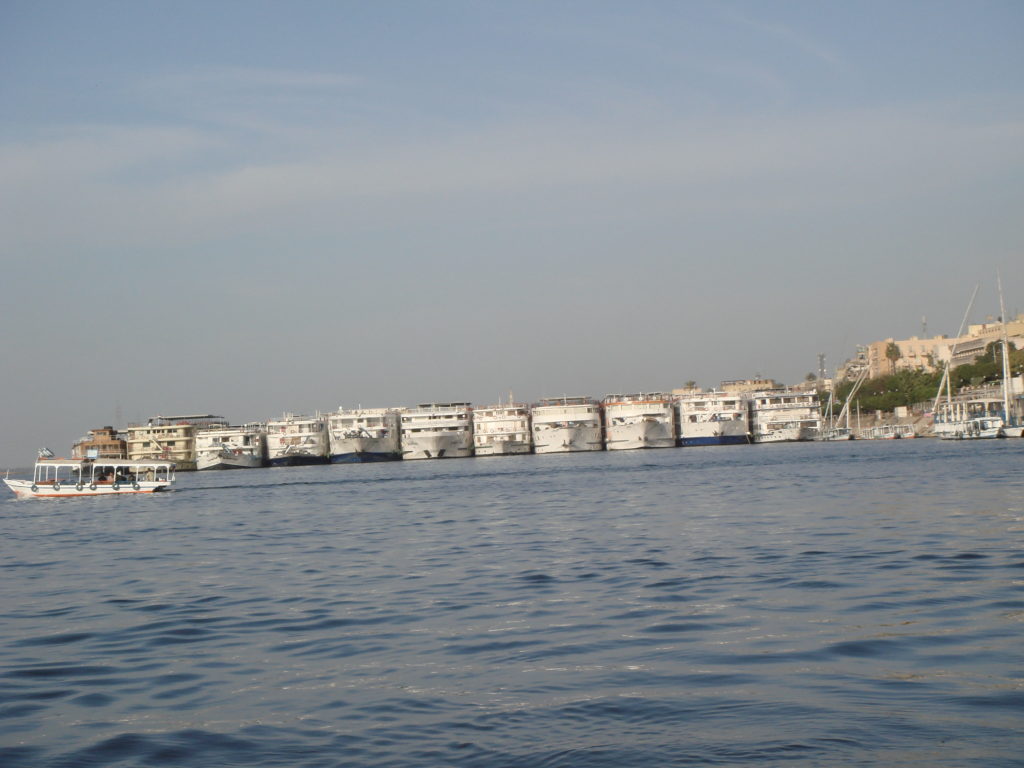
It is along this 125km stretch of Nile, which has been the source of energy and creation, that most of pharaonic Egypt’s greatest attractions are revealed along with the carnival of daily life.
Kom Ombo temple, the river-bank shrine to the crocodile deity, and Edfu temple stops were cancelled. Our cruise boat anchored opposite the Luxor temple with its huge colonnades and colossal statues of Ramses. There were armoured tanks and men with machine guns on the streets, but there were no police. Most people said they hated the police, who were corrupt and abusive, and they felt the streets were safer without them.

The temple complexes were open though the sound and light show highlighting the vast columns of Karnak’s Hypostyle Hall was cancelled because of night curfew. A ride on a horse-drawn carriage was a nice way to explore the narrow alleyways of Luxor. Recently a new Sphinx avenue, dating back to fourth century, has been discovered connecting Luxor temple with Karnak Temple. Our driver,
Mostafa, pointing to the mushrooming homes along this historic path told us that people were resisting the move to evacuate them from the area.
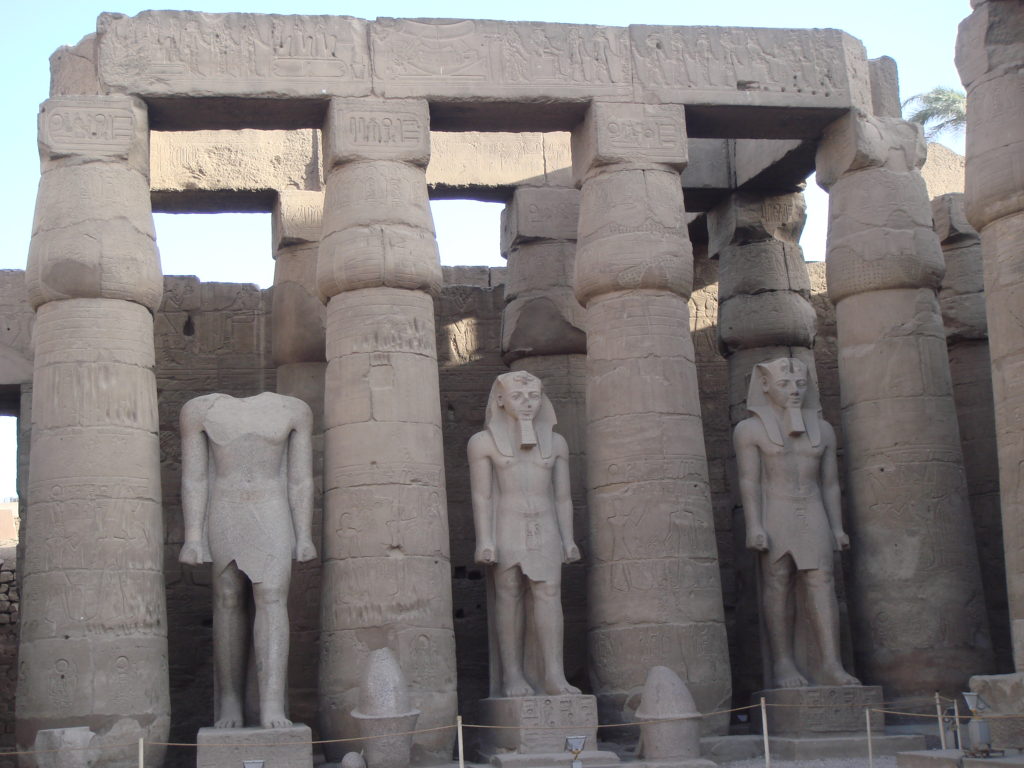
On the west bank of the Nile River, deep in the desert are monuments, temples and tombs, including the Valley of the Kings and the Valley of Queens, where generations of pharaohs and nobles were buried in great splendour. While the treasures have long been looted from their burial chambers, the paintings still retain their original colour. The commanding Temple of Queen Hatshepsut stands tall amidst the mountains and the Colossi of Memnon, two giant statues, is all that remains of the mortuary temple of Amenophis III.
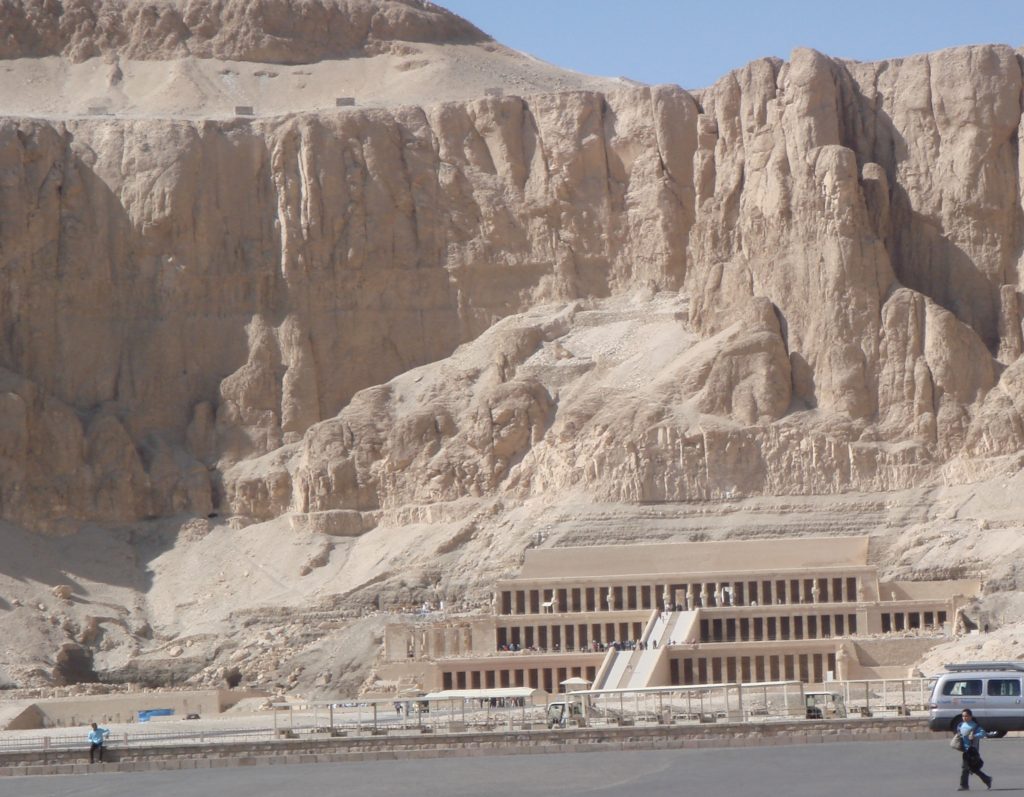
With flights cancelled and our travel agent (Dewan Holidays, Jaipur, India) abandoning us to fate, we made the most of a few extra days while planning our exit strategy, along the way learning some interesting facts about Egyptian life.
While the national currency is the Egyptian Pound (EGP), people drive on the right side of the road and a Five Star doesn’t necessarily qualify for an international standard Five Star facility. It is the stars awarded by the Egyptian Tourism Ministry.
Guides and travel agencies rule the roost. It is imperative to be with a guide lest you will be harassed by camel men to felucca captains and aggressive shopkeepers. Armed with plenty of patience and some wit, you can haggle and get a good bargain for silver jewellery, souvenirs or Egyptian cotton tops and Alabaster statues. Early in the tour, we were warned to pay only 20 percent of what was demanded. Most stall holders accept the US dollar, Australian Dollar, GBP or Euro.
For everything, there is an expectation of `bakshish’ or tip, which can be annoying and at times intimidating. A camel man will pester you to take a picture and then demand `bakshish’. He might even suggest that you can exchange your wife for a hundred camels!
At the Egyptian Perfume Palace, we discovered how scented oils from Egypt are used to make internationally branded perfumes, for example, Tut-Ankh Amon (Hugo Boss men) and Queen Hatshipsut (J’adore dior).
Water is expensive and tap water is unsafe for drinking. One has to purchase water even while dining at restaurants. A big bottle of water can cost between EGP 9 and 12. However, some shops sell locally bottled water for EGP 3.
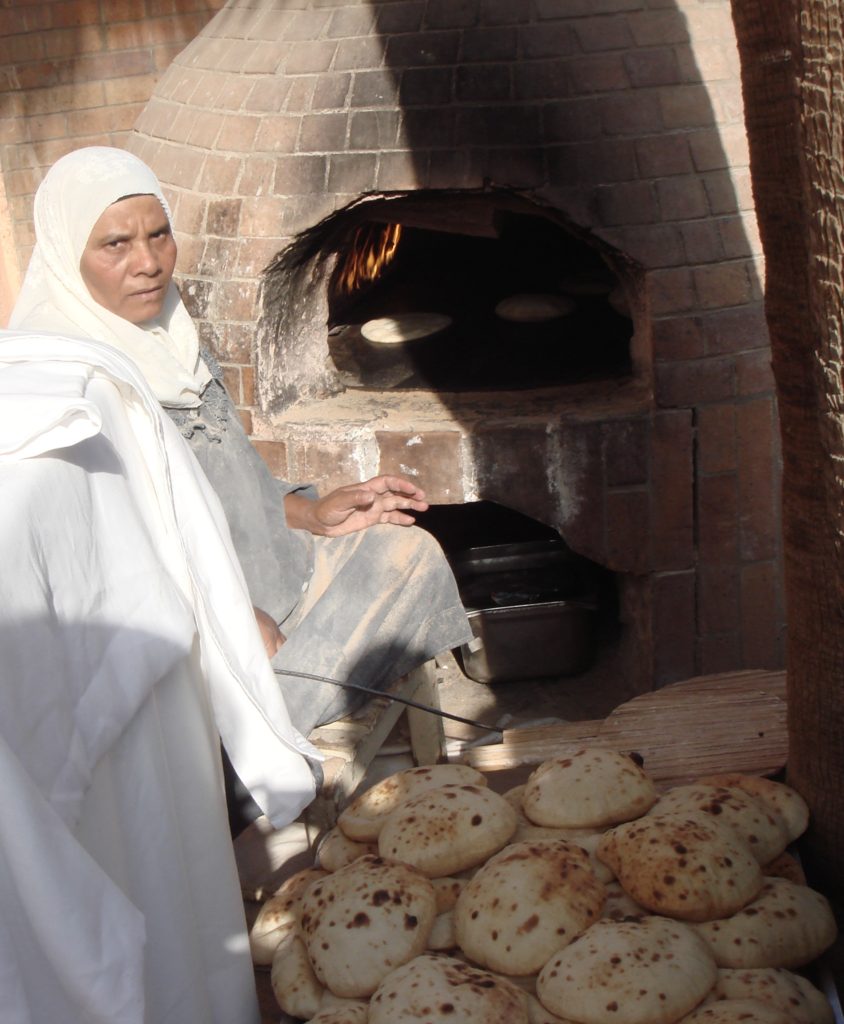
There are plenty of hawkers selling fresh seasonal fruits and one can even indulge in a glass of fresh sugarcane juice. Most streets have huge ovens to bake the traditional Egyptian bread, Aiysh. One can either buy the bread or bring one’s own dough to bake.
And while you may not find cows on the streets, stray cats abound everywhere. Cats in ancient Egypt were worshipped as goddess Bastet.
Egyptians are huge fans of Indian filmstars and they will often attract your attention by calling “Amitabh Bachchan, Shah Rukh Khan, Kareena Kapoor”.
What makes Egypt endearing is the warmth of its people and their sense of humour. A very bright young researcher, Lubna, gifted me a beautifully embroidered Egyptian cotton kurta after a brief meeting.
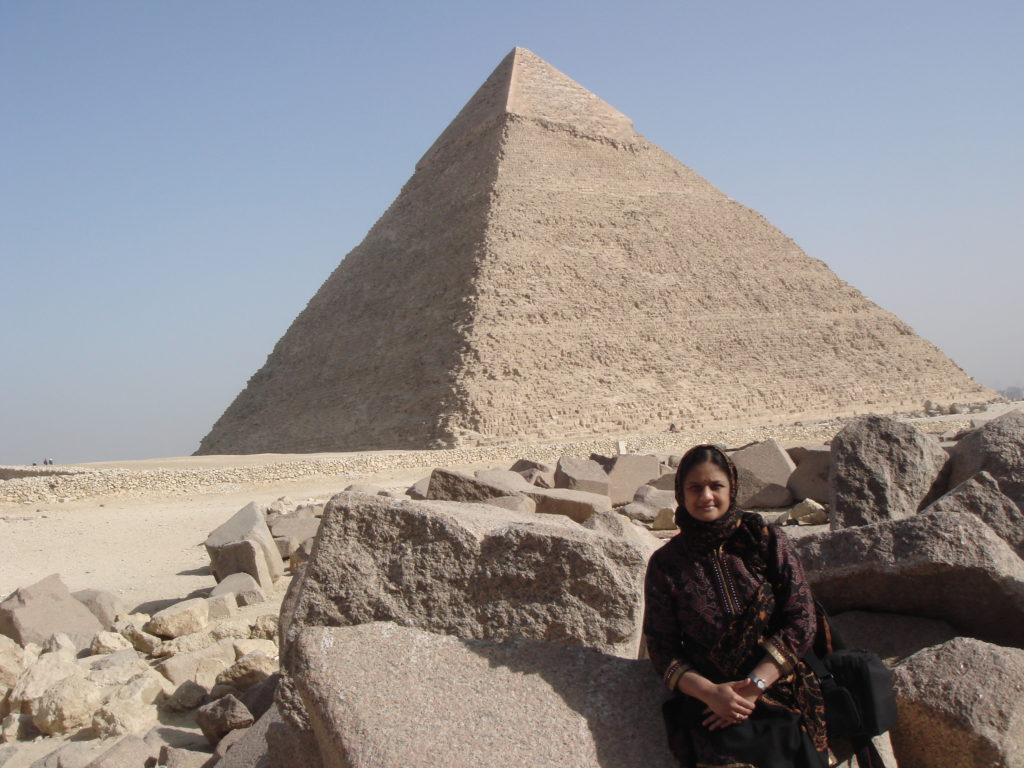 Inshallah! (God willing), one day we will return to see the ancient Coptic Christian and Islamic parts of the inner city of Cairo; the temple of Isis which was moved to the island of Philae to save it from the floodwaters of Lake Nasser; the two magnificent temples of Ramesses II and Nefertari at Abu Simbel; Edfu and Kom Ombo temples; Alexandria and Hurgadha. And above all, to immerse in the chaotic delights of this enduring land steeped in history and culture.
Inshallah! (God willing), one day we will return to see the ancient Coptic Christian and Islamic parts of the inner city of Cairo; the temple of Isis which was moved to the island of Philae to save it from the floodwaters of Lake Nasser; the two magnificent temples of Ramesses II and Nefertari at Abu Simbel; Edfu and Kom Ombo temples; Alexandria and Hurgadha. And above all, to immerse in the chaotic delights of this enduring land steeped in history and culture.
TRICKS & TREATS
*The ideal time to visit Egypt is during winters from December to February.
*The national currency is the Egyptian Pound (EGP), but most stall holders accept the US dollar, GBP or Euro and occasionally even the Indian Rupee.
*People drive on the right side of the road.
*Egyptians are huge fans of Indian filmstars and they will often attract your attention by calling “Amitabh Bachchan, Shah Rukh Khan, Kareena Kapoor”.
*Guides and travel agencies rule the roost. It is imperative to be with a guide lest you will be harassed by camel men to felucca captains and aggressive shopkeepers. Armed with plenty of patience and some wit, you can haggle and get a good bargain for silver jewellery, souvenirs or Egyptian cotton tops and Alabaster statues.
* For everything, there is an expectation of `baksheesh’ or tip, which can be annoying and at times intimidating. A camel man will pester you to take a picture and then demand `baksheesh’. He might even suggest that you can exchange your wife for a hundred camels!
*Did you know scented oils from Egypt are used to make internationally branded perfumes, for example, Tut-Ankh Amon (Hugo Boss men) and Queen Hatshipsut (J’adore dior)?
*Water is expensive. One has to purchase water even while dining at restaurants. A big bottle of water can cost between EGP 9 and 12. However, locally bottled water costs EGP 3.
*Indulge in fresh sugarcane juice. Egyptians have a sweet tooth too.
*For vegetarians, there is plenty to choose from. Aiysh, the traditional Egyptian bread baked in huge ovens on the street, is delicious.
*You will not find cows on the streets, but stray cats abound. Cats in ancient Egypt were worshipped as goddess Bastet.
*Take packets of `bindi’ to gift as Egyptian women love it.
*Always take travel insurance.
NOTE: The writer was in Egypt during the Arab Spring from 23rd January to 3rd February 2011.
© Copyright Neena Bhandari. All rights reserved. Republication, copying or using information from neenabhandari.com content is expressly prohibited without the permission of the writer and the media outlet syndicating or publishing the article.

